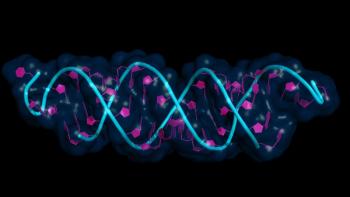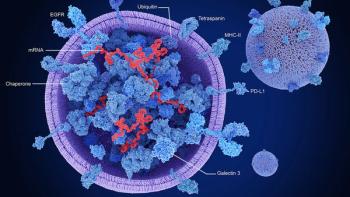
FDA Designation and UK Approval for AAVB-039 Highlight Progress in Complex Gene Therapy Development
Key Takeaways
- AAVB-039 received orphan drug designation from the FDA and CTA approval from the UK's MHRA, advancing its development for Stargardt disease.
- Stargardt disease results from ABCA4 gene mutations, necessitating innovative vector designs for effective gene therapy delivery.
The regulatory progress for AAVantgarde’s AAVB-039 underscores advances in dual-vector gene therapy, as well as scalable manufacturing and efficient rare-disease clinical development.
Italy-based AAVantgarde Bio, a clinical-stage biotechnology company specializing in therapies for inherited retinal diseases, has achieved two key regulatory milestones for its lead gene therapy program, AAVB-039, in development for treating Stargardt disease. The company announced on Oct. 2, 2025 that it was granted orphan drug designation by FDA and received approval from the UK Medicines and Healthcare products Regulatory Agency (MHRA) for its clinical trial authorization (CTA) application (1).
Caused by biallelic mutations in the ABCA4 gene, Stargardt disease is the most common inherited form of macular degeneration and a major cause of vision loss among children and young adults (1). These mutations lead to the accumulation of toxic retinoid byproducts in the retina. Because the ABCA4 gene is 6.8 kilobases in length, it exceeds the capacity of a standard adeno-associated virus vector and thus requires alternative vector design (2,3). AAVB-039 aims to address this challenge by delivering the full-length ABCA4 protein. This approach has the potential to benefit patients across all ABCA4 mutation types, representing a critical advance in inherited retinal disease therapy, according to the company (1).
“The orphan drug designation and UK CTA approval represent two important regulatory milestones for AAVB-039 and reflect [FDA’s] and MHRA’s acknowledgement of the urgent need for treatments for patients living with Stargardt disease,” said Natalia Misciattelli, PhD, chief executive officer, AAVantgarde, in a company press release (1). “With fast track designation already in place [4], we now have a suite of regulatory incentives that will help accelerate development and bring this potentially transformative therapy to patients and families as efficiently as possible.”
What do these regulatory achievements mean for the biopharma manufacturing and development landscape?
The designation of AAVB-039 as an orphan drug provides several development incentives in the United States, including tax credits for qualified clinical testing, waived FDA application fees, and —if the therapy is ultimately approved—seven years of market exclusivity (1). These incentives not only reduce development risk but also encourage investment in manufacturing platforms for gene therapies targeting rare diseases. For biopharmaceutical developers, this recognition underscores how regulatory support can accelerate progress in areas where traditional drug development models have been less economically viable.
In the United Kingdom, CTA approval allows AAVantgarde to proceed with clinical evaluation, aligning with FDA’s earlier clearance of its investigational new drug application (5). Together, these decisions provide a framework for harmonized clinical development and create momentum for scaling manufacturing strategies tailored to complex dual-vector gene therapies. For the biomanufacturing sector, the CTA approval highlights the importance of overcoming vector design and scale-up challenges associated with delivering large genetic payloads.
What happens now with AAVB-039’s clinical evaluation, and what impact will it have on the industry?
AAVB-039 is currently being assessed in a Phase I/II trial (CELESTE), which is designed to evaluate safety, tolerability, and preliminary efficacy across three dose levels in patients with Stargardt disease. Recruitment for an observational study (STELLA) also continues. This study provides important natural history data to inform long-term therapeutic evaluation.
The broader impact for the biopharmaceutical industry lies in the validation of strategies to develop therapies for rare inherited disorders for which manufacturing complexity has been a limiting factor. By advancing a dual-vector system capable of delivering a gene too large for traditional vectors, AAVantgarde’s program demonstrates a path forward for other conditions that require innovative delivery solutions (1).
With an estimated 60,000 to 75,000 individuals affected by Stargardt disease across the US and Europe, the development of AAVB-039 not only addresses a significant unmet medical need but also serves as a case study in how regulatory alignment and technical advances can reshape rare disease drug development (1,6).
References
1. AAVantgarde Bio.
2. Kaltak, M.; Corradi, Z.; Collin, R. W. J.; et al. Stargardt Disease-Associated Missense and Synonymous ABCA4 Variants Result in Aberrant Splicing. Hum. Mol. Genet. 2023, 32 (21), 3078–3089. DOI:
3. Dyka, F. M.; Molday, L. L.; Chiodo, V. A.; et al. Dual ABCA4-AAV Vector Treatment Reduces Pathogenic Retinal A2E Accumulation in a Mouse Model of Autosomal Recessive Stargardt Disease. Hum. Gene Ther. 2019, 30 (11), 1361–1370. DOI:
4. AAVantgarde Bio.
5. AAVantgarde Bio.
6. Britten-Jones, A. C.; Al-Khuzaei, S.; Rizzi, M.; et al. Stargardt's Connected Research Network Inaugural Meeting: Landscape Review and Horizon Scanning of Stargardt Disease. Transl Vis Sci Technol. 2025, 14 (9), 26. DOI:
Newsletter
Stay at the forefront of biopharmaceutical innovation—subscribe to BioPharm International for expert insights on drug development, manufacturing, compliance, and more.





